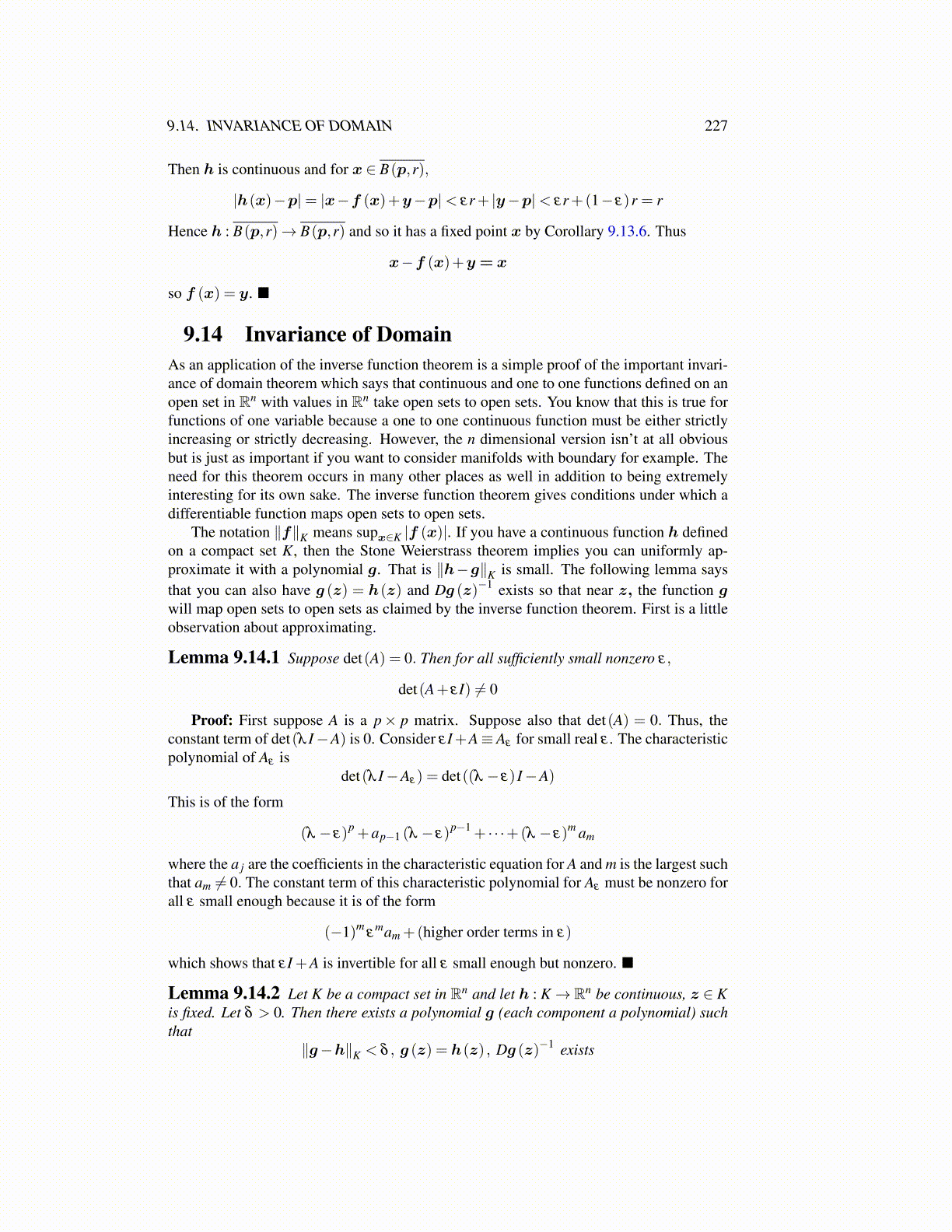
9.14. INVARIANCE OF DOMAIN 227
Then h is continuous and for x ∈ B(p,r),
|h(x)−p|= |x−f (x)+y−p|< εr+ |y−p|< εr+(1− ε)r = r
Hence h : B(p,r)→ B(p,r) and so it has a fixed point x by Corollary 9.13.6. Thus
x−f (x)+y = x
so f (x) = y. ■
9.14 Invariance of DomainAs an application of the inverse function theorem is a simple proof of the important invari-ance of domain theorem which says that continuous and one to one functions defined on anopen set in Rn with values in Rn take open sets to open sets. You know that this is true forfunctions of one variable because a one to one continuous function must be either strictlyincreasing or strictly decreasing. However, the n dimensional version isn’t at all obviousbut is just as important if you want to consider manifolds with boundary for example. Theneed for this theorem occurs in many other places as well in addition to being extremelyinteresting for its own sake. The inverse function theorem gives conditions under which adifferentiable function maps open sets to open sets.
The notation ∥f∥K means supx∈K |f (x)|. If you have a continuous function h definedon a compact set K, then the Stone Weierstrass theorem implies you can uniformly ap-proximate it with a polynomial g. That is ∥h−g∥K is small. The following lemma saysthat you can also have g (z) = h(z) and Dg (z)−1 exists so that near z, the function gwill map open sets to open sets as claimed by the inverse function theorem. First is a littleobservation about approximating.
Lemma 9.14.1 Suppose det(A) = 0. Then for all sufficiently small nonzero ε,
det(A+ εI) ̸= 0
Proof: First suppose A is a p× p matrix. Suppose also that det(A) = 0. Thus, theconstant term of det(λ I−A) is 0. Consider εI+A≡ Aε for small real ε . The characteristicpolynomial of Aε is
det(λ I−Aε) = det((λ − ε) I−A)
This is of the form
(λ − ε)p +ap−1 (λ − ε)p−1 + · · ·+(λ − ε)m am
where the a j are the coefficients in the characteristic equation for A and m is the largest suchthat am ̸= 0. The constant term of this characteristic polynomial for Aε must be nonzero forall ε small enough because it is of the form
(−1)mε
mam +(higher order terms in ε)
which shows that εI +A is invertible for all ε small enough but nonzero. ■
Lemma 9.14.2 Let K be a compact set in Rn and let h : K→ Rn be continuous, z ∈ Kis fixed. Let δ > 0. Then there exists a polynomial g (each component a polynomial) suchthat
∥g−h∥K < δ , g (z) = h(z) , Dg (z)−1 exists